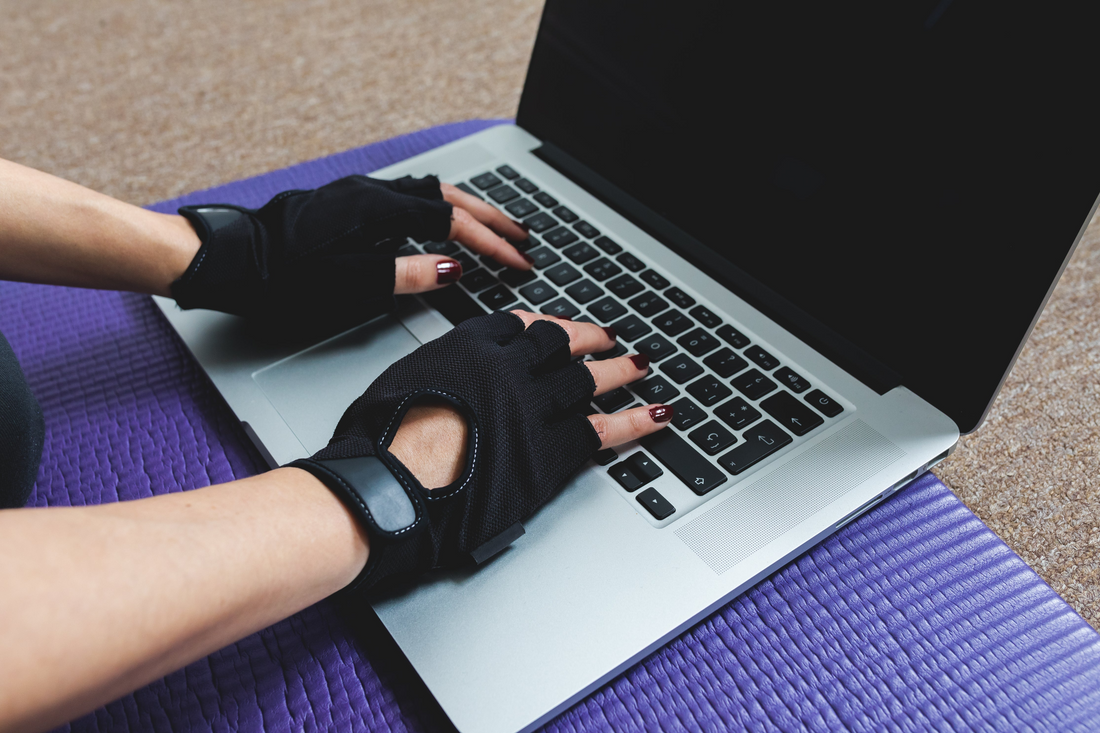September 4, 2025
How's it going, everyone, and parents of future all-stars? 🌟Coach here, and I'm super excited to talk about something that can seem a little intimidating: all those crazy acronyms we see flying around in the fitness world. Have you ever felt completely lost when your pre-teen or teenager or their coach starts talking about their workout? Like they're speaking a secret language filled with acronyms you've never heard of? You know, the ones that look like a secret code? Well, they're not! They're actually really helpful tools that can make you and your kids' workout routines even better.
Let's break down some of the most common ones you'll see, so you can feel confident whether you're at the gym, reading a workout plan, or just trying to understand what your kid is talking about!
The "What's Your Engine" Acronyms 🚀
These are all about figuring out how your body uses energy. It's like knowing what kind of fuel your car needs.
BMR (Basal Metabolic Rate), RMR (Resting Metabolic Rate) & TDEE (Total Daily Energy Expenditure): A highly trained athlete will have a higher BMR and RMR compared to a non-athlete. Why? More muscle! Think of muscle as a high-powered engine that's always on, even at rest. A professional football player’s TDEE might be 4,000-5,000 calories a day, while a parent with a desk job might be closer to 2,000. It's the difference between a sports car and a sedan! For a young athlete, their BMR and RMR are often higher than an adult's, especially during growth spurts! Why? Because their bodies are working overtime to build new muscle, bone, and tissue. Guys generally have a higher BMR than girls because they tend to have more muscle mass.
MAHR (Maximum Aerobic Heart Rate): This is the highest your heart rate should get during exercise. The classic formula is 220 minus your age. A younger person's heart can pump a lot faster to deliver oxygen to their muscles, which is why they often have so much more "go" in the tank! A well-conditioned athlete can sustain a high heart rate for longer and recover faster. For example, a non-athlete might hit their MAHR just climbing a few flights of stairs, while an endurance runner can hold a conversation at a heart rate of 160.
The "How to Train" Acronyms 🏋️
These are the blueprints for building a workout. They help you structure a session so you get the best results.
FITT (Frequency, Intensity, Time, Type): This is the ultimate example of how training differs. A non-athlete might follow a FITT plan of: Frequency: 3 times a week; Intensity: Moderate; Time: 30 minutes; Type: Jogging. An elite athlete’s plan might be: Frequency: 6 days a week; Intensity: High; Time: 2 hours; Type: A mix of sprints, plyometrics, and strength training.
HIIT (High-Intensity Interval Training): Both athletes and non-athletes use HIIT. For a non-athlete, it might be running on a treadmill: sprint for 30 seconds, walk for 60 seconds, repeat. For a basketball player, it might be full-court sprints followed by a quick rest, mimicking the stops and starts of a game.
MICE (Moderate Intensity Continuous Exercise): This training method involves performing a physical activity at a steady, moderate pace for a sustained period. The intensity is typically measured by heart rate, aiming for 50-70% of your maximum heart rate. This type of exercise is a cornerstone of building aerobic endurance, improving cardiovascular health, and enhancing overall fitness.
For Pre-teens (Ages 9-12): MICE is a fantastic way to introduce them to the benefits of regular physical activity without the high-stress demands of intense training. For young athletes, it can be integrated as a form of active recovery or as a component of their warm-up and cool-down routines. For non-athletes, activities like brisk walking, cycling, or swimming can make movement a normal, enjoyable part of their day.
For Teenagers (Ages 13-18): As teenagers mature, their bodies can handle more stress, and MICE can be integrated into their fitness routines more deliberately. For athletes, MICE becomes a key component of their training periodization to help them sustain high performance throughout a game or competition. For non-athletes, MICE is essential for maintaining a healthy weight and cardiovascular health, and can also be a great stress-reliever.
Differences by Age and Gender: The primary difference between age groups is the intensity and duration of the exercise. For pre-teens, the focus is on shorter, more playful activities, as their musculoskeletal systems are still developing. As they transition into their teenage years, they can handle longer durations and a slightly higher intensity, with a focus on specific performance goals. In the context of MICE, there are no significant differences in how boys and girls should approach this type of exercise. Both genders benefit equally from building a strong aerobic base.
RPE (Rate of Perceived Exertion): This is a scale from 1 to 10 that helps you describe how hard a workout feels. A 7 out of 10 RPE for a non-athlete might be jogging, while for a marathon runner, it might be a pace that has them breathing heavy but still feeling strong. It's a fantastic way to make sure everyone, regardless of age or fitness level, is working at a pace that's right for them.
1RM (One Rep Max) & 3RM (Three Rep Max): These are the gold standards for strength. A non-athlete's 1RM squat might be 150 pounds, while a high school football player's might be 300 pounds. For a young athlete, we often use a 3RM as a safer way to test strength. A reminder: Never let a kid try a 1RM without a professional coach to spot them!
AMRAP (As Many Reps As Possible) & AFAP (As Fast As Possible): These are common in competitive fitness. An example of an AMRAP is: "In 10 minutes, do as many rounds as possible of 5 push-ups and 10 sit-ups". For an AFAP workout, it might be: "Complete 100 burpees as fast as possible". An athlete will push for a personal best in these, while a non-athlete might use them for a fun challenge.
TUT (Time Under Tension) & TEMPO: These are a little more advanced. For TUT, instead of doing a fast push-up, you might lower yourself for 3 seconds and then push up for 3 seconds. The longer your muscles are "under tension," the more they have to work. TEMPO is a specific way to use TUT. For a squat with a tempo of 3-1-1-0: you lower the weight for 3 seconds, pause for 1 second at the bottom, stand up for 1 second, and have no pause at the top.
The "Recovery & Performance" Acronyms 🩹
Working out is only half the battle! How you recover is just as important, especially for your growing athlete.
SMR (Self-Myofascial Release): This is just a fancy term for foam rolling. After a long practice, a soccer player might use a foam roller on their quads and hamstrings to help with muscle soreness and prevent tightness. It’s also great for a parent who has been sitting at a desk all day to help with back and hip tension.
MICE (Movement, Ice, Compression, Elevation): This is the go-to for injuries. If your kid sprains their ankle playing basketball, you’d apply MICE: Movement: Gentle, pain-free ankle circles; Ice: A bag of frozen peas on the ankle for 20 minutes; Compression: Wrapping it with an elastic bandage; Elevation: Propping their foot up on a pillow. The principles are the same for everyone, but a young athlete might have a faster recovery time than an adult simply because of their age and faster metabolism.
PAP (Post-Activation Potentiation) & RFD (Rate of Force Development): These are the tools of elite athletes. A track and field athlete might do a heavy squat (the "activation") and then immediately do a box jump (the "potentiation") to increase their explosive power. This is because the heavy squat "wakes up" their nervous system, leading to a faster RFD in the jump. The difference in RFD is what separates a world-class sprinter from a casual runner.
RFT (Rounds For Time) & Effective Strength: An athlete will push themselves to complete an RFT workout as fast as humanly possible, knowing that every second matters. For them, Effective Strength is everything. A boxer's strength isn't just a heavy bench press; it's the ability to deliver a knockout punch. For a gymnast, it's the strength to hold a perfect handstand.
So there you have it! A cheat sheet for all those fitness terms and how they change with age, gender, and athletic level. Now you can not only understand what's going on but also have a more meaningful conversation with your kid about their training. Remember, it's all about having fun and being safe. Keep up the great work, and I'll see you in the gym! 💪
You can always count on the HEROS Training System for support and awesome info. For more resources and tips, check us out at myherostraining.com or myactos.com. You can also follow us on Facebook and Instagram. We love hearing from you! If you have any feedback, worries, or cool ideas, please send us an email at info@myherostraining.com.
Remember this golden rule: More is not always better; better is always better!
Until next time, keep moving and grooving!
Gaspar
Certified Sports Performance Enhancement Specialist, Fitness Nutrition Coach, & Youth Fitness Trainer
ACTOS Performance Innovation / HEROS Training System [HTS]
https://www.trainerize.me/profile/herostrainingsystem/Gaspar.Rosario/
Dr. Rosario's expertise is built on a lifelong commitment to fitness. He is certified by the International Sports Sciences Association (ISSA) in multiple advanced areas, including Weight Management, Youth Fitness Training, Fitness Nutrition Coaching, and Sports Exercise Performance Enhancement. He also holds a Doctorate in Health Sciences and is a certified Level 1 Strength and Conditioning Coach through the IUSCA with continued education through ISSA in specialized training methodologies such as High Intensity Interval Training (HIIT), Plyometric Training Integration, and Speed / Agility.

